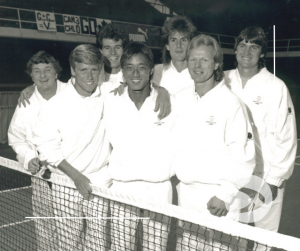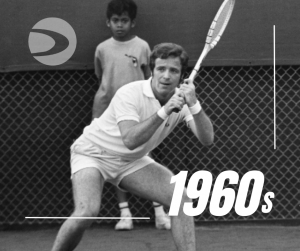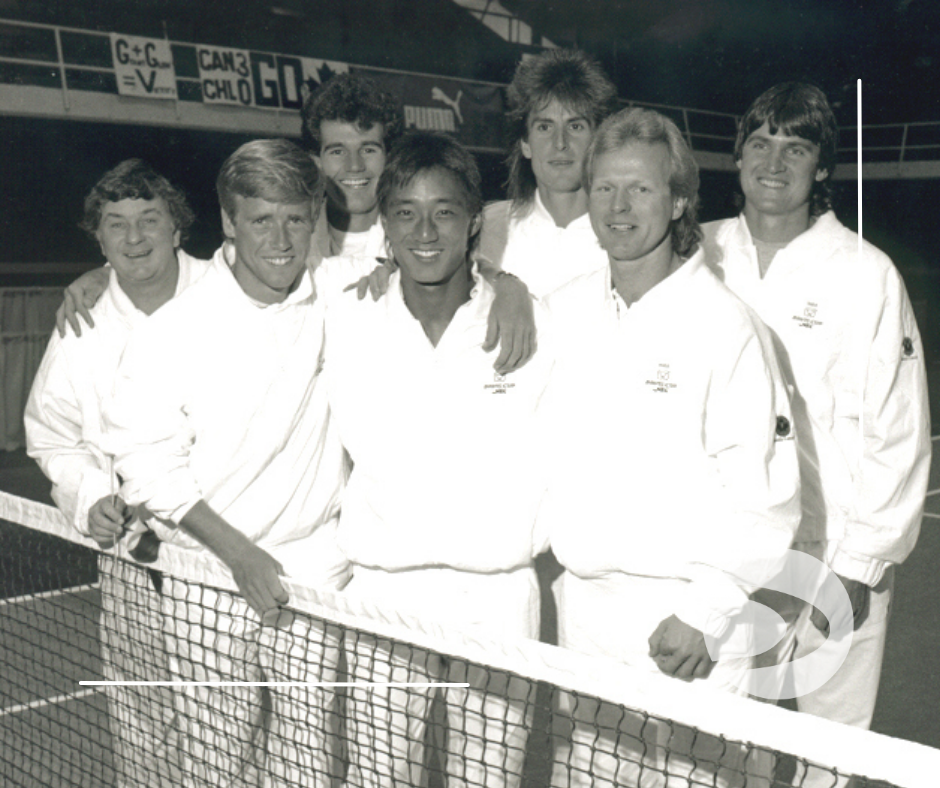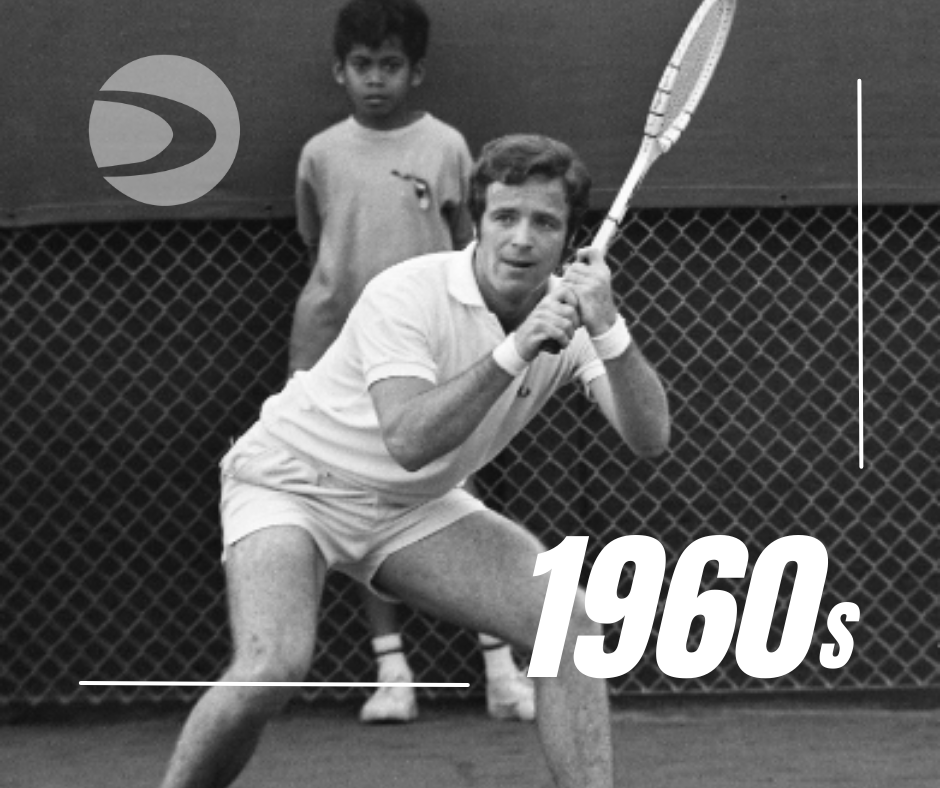Written by: Angela Sekely
__________
***Angela Sekely is a tennis player from Mississauga who is currently playing for the University of North Carolina Wilmington. Ranked #5 U16 in Ontario, she finished 9th at Canadian Outdoor Nationals. Among her other titles are: Winner 2009 U18 National Qualifying Championships, Winner 2008 U16 Provincial Championships, Semifinalist 2009 Outdoor National Selections, Semifinalist 2009 Yale ITA doubles and Quaterfinalist in singles, and others. When she is not on the court, Angela plays badminton (Winner 2008 Regional Badminton Championships). She is also participant of the Canadian Royal Conservatory for Piano.***
__________
Jogging around the tennis courts for my warm up lap, I suddenly switch into a shuffle. In my head, I am counting my strides: One, two, three … until I get to fifteen. I flip around so my other foot is ahead and count fifteen strides once again. I always have to do fifteen steps each way before a match. Although I never really thought about it before, there are certain actions I am sure to do before a match which put me into a comfortable state of mind for the game. I believe that it is the little things and attention to detail in my pre-match routine that makes the difference. For example, I have to have two bobby pins in my hair while playing tennis. I cannot have three, and I cannot have one. It has to be two. Also, I have to sit on the same side of the bench every match until I lose a match, and then I will sit on the other side until I lose again and so on. I feel that this repetitive behaviour influences a positive outcome, so I continue to engage in it. Training and preparations are the key factors to attain competitive success, but anecdotal evidence indicates that many athletes engage in additional practices to gain an edge over an opponent. They employ the real or imagined power of rituals and superstitions, and I am one of them.
The existence of superstition in sports evident and has been defined as “actions which are repetitive, formal, sequential, distinct from technical performance and which athletes believe to be powerful in controlling luck or other external factors.”Superstitions are common in high level sports because they are known to relieve stress, build confidence and make athletes feel that they are doing everything they can to win. It might not be obvious, but objects and routines can bring assurance and courage to an athlete which enables peak performance. In the US Open, for example, servers will ask for multiple tennis balls before serving and will choose the “best” one – literally believing that whichever ball they choose will make a difference in the point. When asked about it, professional player Novak Djokovic said “I am convinced in my head that it does make a difference”. Many players subconsciously have the thought that the “right” ball is with me, luck is definitely on my side, and immediately have a sense of assurance and confidence throughout the point. Without even realizing, the player is more relaxed and this in itself supports higher athletic performance. Having tension removed from the equation is already an advantage. Players are often encouraged to play loose and relaxed as much as possible to allow the body to perform at an optimum level. Tension and self – doubt rob an athlete of an ability to compete at his/her highest level, create a sensation of vulnerability and inability to respond to match situations and demands.
A keen observer of a tennis match will likely notice that almost each player relies on his or her superstitions to maintain competitive advantage and may ask a question, “What prompted each player to develop a set of specific superstitions?”Upon an introspective look at my own superstitious practices, I realized that most of them developed in hindsight and then became an important part of my preparations for each match. I recall analyzing why I had good performances (or bad ones) and what were the elements that caused them. I noticed that I paid attention to items such as colour of my racquet grip or socks, the song I listened to just before a match and the way my hair was done. The more I analyzed the process leading to my performances, the more of a pattern I noted in my pre and during match behaviours and adopted them as my own superstitions.
Going into matches which are expected to be close, causes all players to have an uncertainty about the outcome. They, therefore, begin to question their skill, talent and hard work leading up to this point. Having something which builds confidence in oneself is beneficial. This is another reason why superstitious rituals are popular among athletes. Confidence is a huge aspect of sports, especially individual sports such as tennis, where everything is dependant on oneself. After completing my set pre-match routine, I enter into a match with confidence allowing me to get a strong start and make the opponent fear me early on. I want my opponent to sense my dominance and start doubting her ability to compete with me. This gives me a mental edge and makes me more likely to win – the goal of all competitions.
Winning athletes are more likely to be superstitious because success leads to the development of routines. For example, if I were to eat a bagel with peanut butter and a banana for breakfast and then proceed to win my match, I would probably eat the same thing before my next match. This is because I would have the mental perception that it was this specific breakfast which helped me win my match. On the other hand, if I were to eat the same breakfast and then lose my match, I would not eat it again before my next match because I would consider it unlucky. Many tennis players on the pro tour are superstitious with the foods they eat. They will often go back to the same restaurant to eat after winning a match, hoping that it will “do the same trick” and help them continue to win.
If it works, then use it.
Not only does having a superstitious ritual build a player’s confidence, it also affects the mental state of an opponent. If a player were to see his/her opponent repeatedly doing an unusual action and gaining confidence from it, then they will immediately begin to doubt their own game, like Patty Schnyder did when she was playing Conchita Martinez. Martinez kept asking for the same ball back after winning a point because she believed that it was the ball that was doing the winning. Schnyder became so mentally frustrated by Martinez’s winning streak that she grabbed the ball and shoved it in her pocket so that Martinez could not have it back. Martinez’s routine served a two fold purpose; it mentally wore down her opponent and increased her own confidence based on the impact her routine had on Schnyder. Therefore, not only can you have an advantage from a superstitious ritual, but your opponent can also have a slight disadvantage as a result of it. This widens the gap between the levels of play giving a competitive advantage to one of the players.
It is easy in sports to feel like you are losing control. This is when we look for an outer aspect for hope and begin using superstitious rituals. Athletes often get to the point where they feel like they are doing everything they can, and even that is not good enough. Although they are exerting all of the energy, they still end up on the loosing side of the score. This is when players feel that they have no where to turn to and start examining every aspect of their game and all ritual and superstitious preparations. For example, after losing one of my matches, I discovered that I had three bobby pins in my hair and upset with myself for not observing my rituals with greater diligence. The next match I made sure to go back to my usual and wear only two, thinking that this is what caused me to lose the tight match. While going through my shots during warm up in the next match, all I could think about was the two bobby pins in my hair and the confidence I had knowing that all is as it should be – my anxiety decreased and I was ready to compete. I was then able to relax and play my game, instead of worrying about my past event. It is the little things that count.
Undoubtedly, rituals and superstitions in athletes’ arsenal are aimed at wining and being successful. Yet, on the other side, the employment of such practices is to prevent what athletes fear the most –losing. Players are scared that if they do not do their ritual before their game, they will lose because they left an aspect of match preparation to chance. It is similar in nature to people who do not delete chain letters in e-mails. They fear that something bad will happen if they do. They are not necessarily looking for something good to come along when they keep the email chain alive, but rather want to eliminate any possibility of anything negative to come their way. For example, pro player Rafael Nadal always keeps two water bottles on court and they must be lined up with the labels facing the end he is playing on for each change over. If he does not make sure these actions are completed, he fears that he will lose the two games. Ideally, an athlete should not be playing with the crippling fear of loosing; he/she should be playing to win. Serena Williams is adamant that she lost the 2008 French Open due to the fact that she did not tie her shoe laces right and did not bounce the tennis ball five times before her first serve. She believes that this was her undoing in terms of ensuring that luck is on her side.
Even a tennis legend John McEnroe had his superstitions; between points, he refused to step on the white lines of a tennis court in fear that it may change his fortunes.
Yes, there are, or were, skeptics amongst tennis players disregarding the power of superstition as an element enhancing performance. Andy Murray was one of them and often would refer to the use of superstitions linked to ritual behavior as “hogwash.” Ultimately, even Murray started to shift his thinking and now is on the side of superstition. Now, he will practice at the same time of the day and during Wimbledon, he would warm up on the same court. It may be difficult to say affirmatively that this change in Murray’s approach was the key missing ingredient in his success, but now he is the fourth highest ranked player in the world and believes that luck is on his side. Science seems to support Murray’s claim to luck being on his side and aiding his success.
A recent study at the University of Cologne, Germany suggests that the power of superstitions is real and can aid athletes’ performance. Competition can challenge a tennis player not only physically, but also mentally and any aspect of preparation that helps physically or mentally should not be left at the mercy of chance occurrence. It was Boris Becker who was heard saying that the top 200 players in the world can hit the tennis ball as well as he does, but what separates the top 10 from the rest of the field is the mind and its impact on the body. Boris Becker was very diligent and detailed with his superstitious routines in the name of “mind over body” philosophy. Becker and all other players state unequivocally that their routines, however silly they may be, help them relax, boost confidence and gain a sense of control.
I am a tennis player at the University of North Carolina – Wilmington; I am no different than Williams, Nadal, Becker, Djokovic, McEnroe or Martin. Just like them, I desire to win because I am in the business of winning. I train hard to get my body ready for all that each competition may bring and will leave nothing to chance. I will make sure that all is in place to bring peak performance to each and every match. My two bobby pins – thank you for not only holding my hair together, but also being the reassurance that all is in place for me to be the best I can be.







